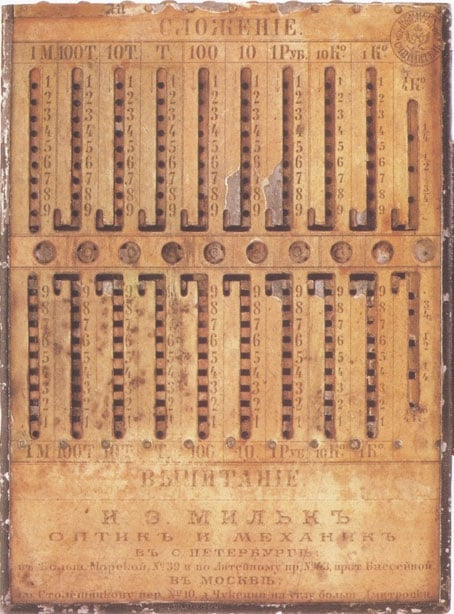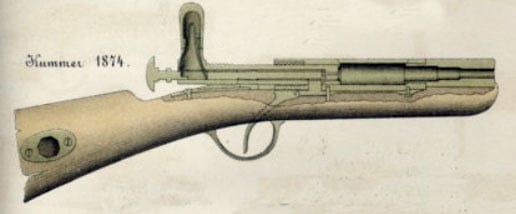Heinrich Kummer – Biography, History and Inventions
Key Points:
- Though Heinrich Kummer initially followed in his father’s footsteps by becoming a musician–a bassoon player and pianist to be exact–his true talent was in mechanics.
- On 4 September, 1846, Kummer presented his adding device to the Russian Academy of Sciences, which was found to have quality construction and easier functionality than earlier versions.
- Kummer designed a bridge over Neva in 1837 which would have allowed traffic over the bridge while ships could simultaneously pass under it, but the project was never realized.
Heinrich Kummer
The information for Kummer in Russian sources is very scanty. It is mentioned only that he was a teacher of music in St. Peterburg. Who was this mysterious person?
Heinrich Gotthelf Kummer was a German musician, born on 8 November, 1809, in Dresden. He was the only son of the German bassoon virtuoso Gotthelf Heinrich August Kummer.
Gotthelf Kummer was born on 23 January, 1774, in Neustadt, near Dresden, as the third son of Johann Gottfried Kummer (1730-1812), the founder of the famous German musical family Kummers. Gotthelf was trained the music from his father and practiced chiefly on the bassoon, touring with great success in many European countries. Gotthelf Kummer died in Dresden on 28 January, 1857.
Following the steps of his father, Heinrich Kummer became a bassoon player and pianist, but never managed to approach his father’s success. Instead of that, he demonstrated outstanding capabilities in a field rather distant from that of music—mechanics.
Heinrich concerted with success with his father all over Germany from the age of 6 years old, playing the piano and later bassoon. For example, in 1816 the King Maximilian I Joseph of Bavaria awarded them with 300 golden ducats. In 1832 however, trying unsuccessfully to obtain a good permanent position as a musician, Heinrich left for two years for Poland, (a Russian province then), working as a piano teacher in the family of the former administrator of the Lowicz principality. In 1834 he went to St. Petersburg, Russia, where in 1837 he joined the Imperial Russian theater and opera orchestra as first bassoonist.

While in St. Petersburg, Kummer designed his famous adding device, which he subsequently presented to the Russian Academy of Sciences on 4 September, 1846. The reviewer of his device was the famous mathematician Mihail Ostrogradsky, who noted in his review that “the main idea was borrowed from Slonimski, but the construction resulted was incomparably simpler and more convenient in use.” One of the major of advantages of Kummer’s adding machine was portability.
Kummer also designed a bridge over Neva (in 1837), allowing traffic over the bridge while ships could simultaneously pass under it. The project was never realized, but the plan was preserved at Petersburg city archives. Studying for years birds and insects, Kummer constructed several automatic devices, powered by watch springs, which imitated the movement of fish in water and the flying bird.
In 1847, after serving for ten years, Kummer received a full pension and the next year he left Russia for Switzerland. In 1851 he moved back to his home city, Dresden, where he continued to work as a music teacher.

Back in Switzerland and Germany, Heinrich Kummer was evidently more interested in shooting and rifles than in calculating devices. He made his rifles himself and even constructed a new System Kummer rifle (see the upper image), which received prizes on several exhibitions in Frankfurt, Bremen and Vienna. He even wrote a book about shooting.
In 1869 Kummer most likely visited USA, as in 1869 in New York he received a patent for his calculating device (he used the English variant “Henry Kummer” of his name).
Heinrich Kummer died on 20 March, 1880, in Dresden.
Up Next…
- Ada Lovelace – Complete Biography, History and Inventions Learn about the fascinating female mathematician Ada Lovelace, who is credited with developing the first computer programming language.
- Charles Babbage Analytical Engine Explained – Everything You Need To Know Meet Charles Babbage–philosopher, mechanical engineer, mathematician, and inventor.
- Charles Labofish – Biography, History and Inventions Charles Labofish was a Jewish inventor who held patents for six different calculating machines.
The image featured at the top of this post is ©G-Stock Studio/Shutterstock.com.








